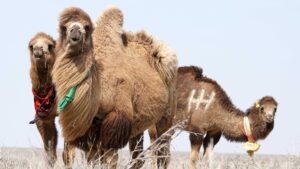A month after the advent of “Bloody January” in Kazakhstan, a clear report of the protests is yet to be published. Despite this, an official report concerning the death toll of the events has been released, stating a total of 227 deaths. This figure is largely contested by many NGOs who base their opinions on the testimonies of local protesters and activists.This article was originally published on Novastan’s French website on February 8, 2022. The ambiguity surrounding the official reports of the January protests in Kazakhstan mirrors the urgent importance of the event. From the 2 to the 8 of January 2022, the protests, often evolving into riots, have killed 225 people of which 175 have died under medical care, according to the first official investigation conducted by the Ministry of Health on January 15 (as diffused by Kazakh Masa Media). It has been reported that since January 5, there have been 2,677 injured and requiring medical attention, among whom 265 are still receiving treatment with 67 in intensive care. Radio Azattyq, the Kazakh branch of American media outlet Radio Free Europe, has published that this report was updated on January 26, and now states 227 dead, including 19 police officers, and 4,578 injured with more than one hundred accounts of torture. However, it is believed that the official report contains many grey areas. This concern was raised by NGO Amnesty International in its report published on January 25. As the confrontation was starting to escalate, President Kassym-Jomart Tokayev ordered the police to open fire without warning the protestors. He also cut off the internet; “[t]he total internet cut off for at least a day propelled people into secrecy”, said Tatyana Chernobil, a local human rights defender, when interviewed by Amnesty International.
Multiple Unexplained Disappearances
“Those who could provide information independently, such as journalists and human rights defenders, faced obstruction of their work and repression, and were even publicly named by the President as responsible for fomenting unrest,” explains Amnesty International. Such radical obstructions to the accessibility of independent information resulted in many unexplained disappearances. Many journalists were arrested whilst trying to report on the events, among whom is Daryn Noursa, as explained by Kyrgyz media Kloop. A journalist of Altay News was imprisoned for fifteen days for having reported on a rally in Oskemen in eastern Kazakhstan.
A Database Created to Improve the Search for the Missing People
Attempting to get answers, Kazakh volunteers have created a database with the goal of collecting testimonies to help their search. “We want to help relatives find the missing by assembling a list of victims; people who have been detained, injured or killed during the tragic events that took place in Kazakhstan in January 2022, as well as retracing the history of those events”, the creators explained to Masa Media. Russian media outlet Fergana News reported that on February 4, a list of 173 names was published on Facebook. On January 25, an independent commission was created to conduct inquiries into the events of “Bloody January”, without any official filiation. Around ten to fifteen people shall investigate the causes and consequences of the events, as to deliver a judicial evaluation of the matter. In such circumstances, the government’s official statement announcing the death toll is of questionable credibility.
The Total Lack of Transparency from the Law Enforcement Regarding the Deaths of Civilians
Also, in its report published on January 25, Amnesty International stated that on January 19, a coalition of Kazakh NGOs declared that “the exact number of civilians killed, injured or otherwise affected, including the dead, remains unknown.” In addition to the constant internet cuts during the unrest, there is a total lack of transparency from the law enforcement on the circumstances of the civilian deaths. Radio Azattyq published an article on January 19, collecting several testimonies in a quest for a firmer understanding of the course of events on January 6 in Almaty. This was one of the most violent days from the period of unrest. On January 31, The New York Times released an article including the unpublished testimonies of multiple Kazakh citizens who had been arrested, tortured, and released in the best of cases. The article describes the tragic story of Yerlan Jagiparov. On the January 6, Yerlan (49) went outside to see what was happening in the centre of Almaty, the economic capital of the country, and an hour later he called a friend to warn him that he had been arrested by the National Guard. From that point onwards nobody had heard anything from him. Six days later, his family found his body at the morgue, naked, mutilated, handcuffed and with a broken hand, face swollen and bullet wounds around his heart and stomach. His family is still demanding an investigation into the circumstances of his death. Since Yerlan Jagiparov’s story broke out, numerous families have filed complaints for similar situations and are waiting for investigations to be launched.
The People Are Not Terrorists
Among the varying testimonies and situations that have occurred, there is a common denominator: peaceful protesters have found themselves evolved into war scenes in the middle of the street. An inhabitant of Almaty, Ajar Bimamir, described to Radio Azattyq that the majority of protesters were carrying placards with slogans such as: “The people are not terrorists”, “A policeman with weapons is not a policeman”, and “Don’t shoot, don’t punch”. Additionally, the article reports the confusion about which armed forces opened fire: some people speak of Russian military whilst others speak of Kazakh military.
Another civilian interviewed by Radio Azattyq described cars riddled with bullets and soldiers preventing the evacuation of the wounded by immediately shooting. Eventually, pressured by foreign NGOs and the Kazakh human rights activists, the government published an official death toll for the bloodbath in Almaty. The report alleges 149 victims, including 11 police casualties, without any specification whether the victims were violent protesters or collateral caught in the crossfire.
A Disproportionate Use of Violence to Suppress the Protests
In a detailed report published on January 26 and regularly updated since, also summarized in a video, the NGO Human Rights Watch (HRW) cross-checked dozens of videos and testimonies, attempting to retrace the exact chronology of events in Almaty between January 4 and 6. The outcome of such evaluations is that an excessive and disproportionate use of violence was used by the government towards the demonstrators. “There is clear evidence that the security forces opened fire without obvious justification and killed at least 10 people,” researcher Jonathan Pedneault told HRW. In its report, the NGO also underlines that the acts of disproportionate violence by the police against peaceful protesters had taken place long before the presidential order to shoot without warning. Human Rights Watch reacted by asking the Kazakh President to rescind his order, which coincided with the arrival of foreign troops of Collective Security Treaty Organization (CSTO) to Kazakh territory. On February 3, the Kazakh government reacted to this report by condemning the cases of “disproportionate use of force, illegal detention, torture and ill-treatment of detainees”, Fergana News reports. Faced with demands for transparency, notably by the European Parliament, the Kazakh authorities promised that light would be shed on the events. Media outlet Informburo.kz has reported that on January 22, Kazakh President Kassym-Jomart Tokayev instructed the Attorney General’s Office and the Ministry of the Interior to carry out a thorough investigation into the death of each citizen. There are no further details being given at this time.
Elliot Obadia Reporter for Novastan
Translated from French by Elise Lloyd
Edited by Emma Jerome and Anna Wilhelmi
For more news and analysis from Central Asia, follow us on Twitter, Facebook, Telegram, Linkedin or Instagram.
 Kazakhstan: The Blurred Record of the January 2022 Unrest
Kazakhstan: The Blurred Record of the January 2022 Unrest 



